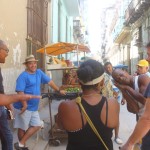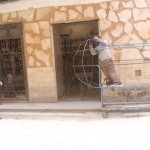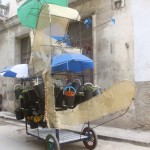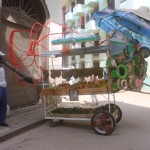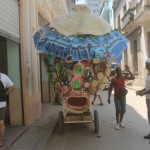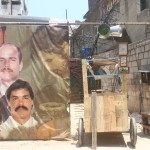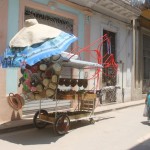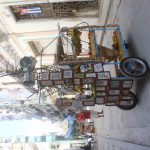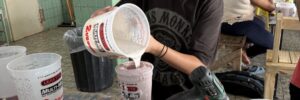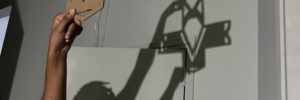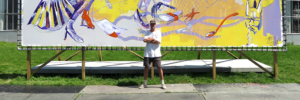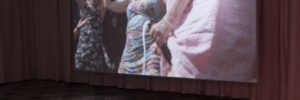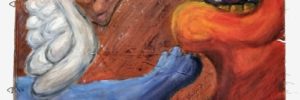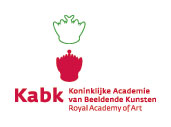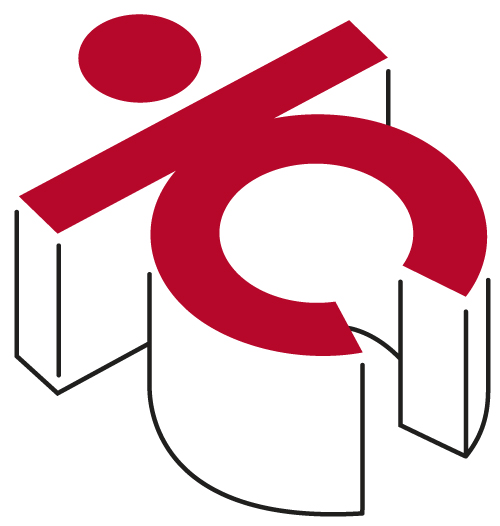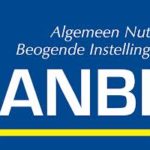18 Jun 2015 | 2,379 views
David Bade and Tirzo Martha have been selected to contribute to the 12th edition of Havana Biennial by curator José Manuel Noceda. On behalf of Curaçao and the Kingdom of The Netherlands Martha and Bade chose to make “social sculptures”; art pieces that come into existence by interaction with the public. For Tirzo Martha this was his second time at the biennial, the first being the 2009 edition, and this helped a great deal to get the logistics going.
On the streets, from their direct observations and experiences with the environment and the residents of the neighbourhoods Martha and Bade created 3 moving sculptures based on the fruit carts called ‘carretillas’. They worked daily with the local fruit vendors, first collecting materials, designing the sculptures and finally constructing them. The materials were things that struck them about Cuba, for example the fishnet stockings the uniformed women were wearing or the Panama hats that were sold everywhere. They found stories to worth with from talking with the vendors, but also from meetings with neighbours who gave a helping hand. They met Cubans who worked in the German Democratic Republic and who spoke fluent German with David. A lady supervising the street and selling tiny cups of coffee turned out to be a former judge. A diabetic retired government employee used to be a neighbour to the photographer of Ernesto “Ché” Guevara
The ideas of Bade and Martha fitted well within the theme and the curatorial concept of the Biennial: “Between the idea and the experience.” It’s the relationship between art and the urban (social) situation that was important to the organisers. This fits like a glove for the two artists who, in their own practice and over 10 years of shared context of projects in the community with IBB, proved to be truly committed to their surroundings and always have a ‘hands on’ mentality when exhibiting or teaching and encouraging their students.
One student of IBB, Sindey Faneyte had her horizons widened without doubt at Cuba. She provided assistance, made drawings, visited museums and works of artists but also gained experience by the encounters she had with the Cuban people. PR staff member – and also visual artist- Avantia Damberg documented the entire process. The team had a good dynamic as the two weeks were intense. When one makes art on site for the Biennial, they must be assertive as the Biennial organisation won’t really support you with anything. They invited so many artists that they made it difficult for themselves to provide proper assistance to the artists, although favouritism is also something the organisation should try to avoid.
The artists realised each day the sharp differences between capitalism and socialism/communism in the simplest actions. And how their actions impacted the people and brought awkward situations.
For the fruit vendors this venture was a risk they were willing to take and they got an idea how it is to work with artists and what their worlds looked like. One fruit vendor named Ana said: It is all for the sake of art, and art is not something you can calculate or regulate, it happens. We didn’t know what we would get ourselves into, but we surely learned from this. I learned to take risks, even more than before.
All these factors not only contributed to three moving ‘carretillas’ sculptures, but to an entire Biennial experience in socialist Cuba. A documentary made by Avantia Damberg will come out of this. The date of the release will be announced in autumn this year.

